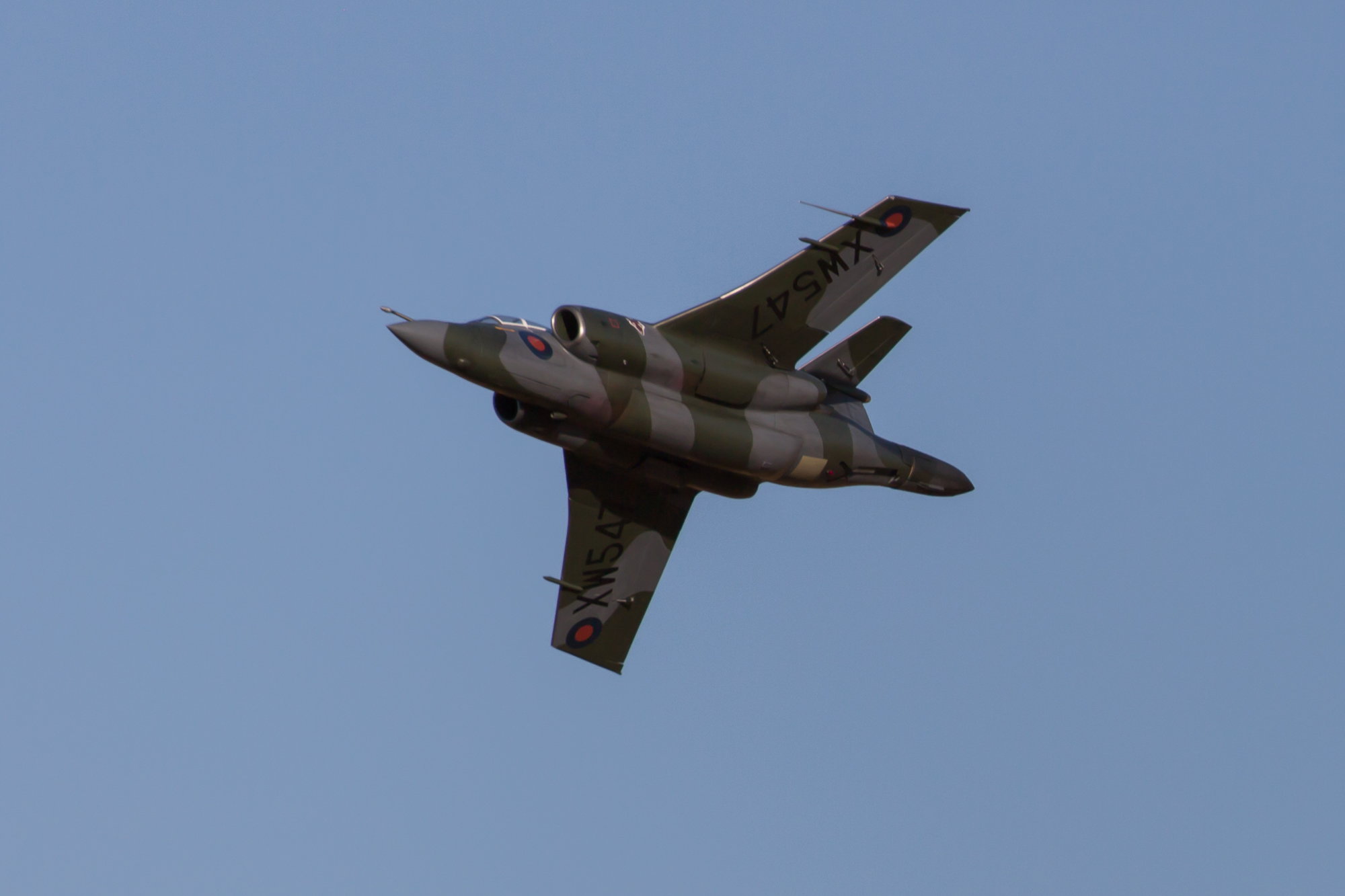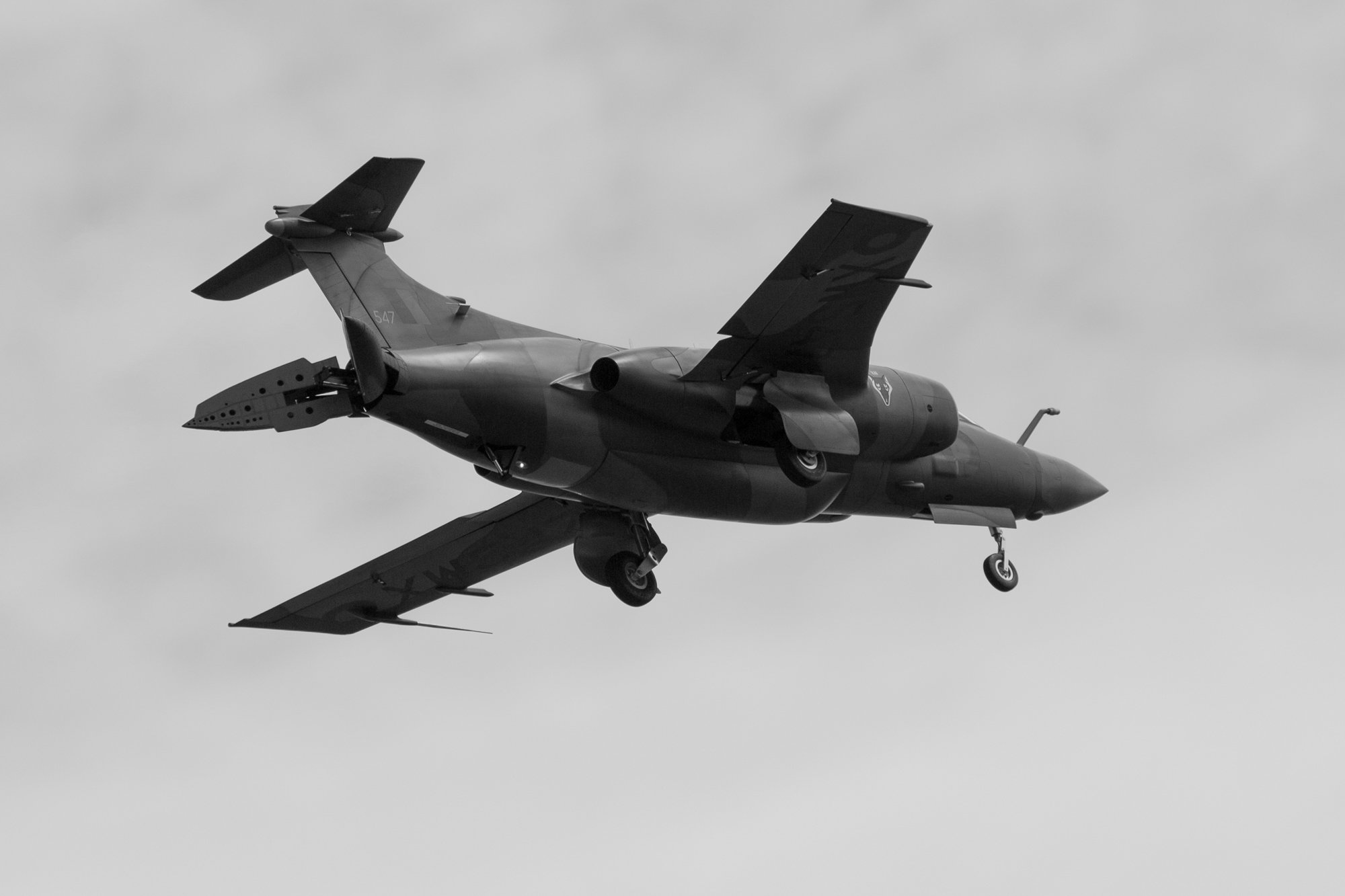I'm interested in pilot comments expanding on the flying qualities of the mighty Buccaneer.
I've just watched the Dave Southwood interview on YouTube about his experiences, and he described the flying qualities in 3 distinct areas;
- 300-550KCAS - probably the best aircraft for flying low, delightful to fly.
- Above 550KCAS - directionally not that easy - would yaw off, fin too short.
- Landing Pattern - probably the worst handling characteristics of anything he's flown.
I've spent 30+ years as a flight test engineer on military fast jet aircraft, originally in the UK, now the USA. My hobby is radio controlled model aircraft and I have recently designed, built and flown a 1/7 scale model of the Buccaneer. At 9ft (108") long, 75" wing span, weighing 61lb at take off and powered by 2 22lb turbines with 1.5gal of Jet A it is a monster model, but very impressive looking in flight. I have incorporated drooping ailerons (flaperons) as well as the inboard flaps and the tailplane flaps and a functional speedbrake. The main gear also shrinks during retraction to fit in the wheel well. I have not attempted wing-fold nor the blow system.
The first 2 models were lost in early flight test, but as the saying goes, 3rd time's a charm and so far it has 45 flights on it.
The reason I ask about pilot comments from the full-scale Buccaneer is that my model version also has some very unique handling characteristics in the landing pattern, and I am interested to know if this is just a trait of this model, or something that has carried over from the full-scale.
In particular, when the flaps and ailerons are drooped for landing, the model exhibits a very strong tendency to roll wings level when centering the stick and has the need to hold in significant proverse aileron all the way through the turn. This has taken some effort to balance control throws and to learn the characteristic as it was so unusual compared to everything else I've flown.
Also, with the flaperons drooped, the model validated the need for the tailplane flaps to counteract the nose-down pitching moment from the flaperons, as I would run out of nose up elevator authority with the tailplane flaps at neutral.
With half speedbrake, full droop and about half power, it is very precise to fly on final approach, using power to control sink rake.
A few pictures of my model (not yet finished). If you squint I think you can tell it approximates a Buccaneer.






